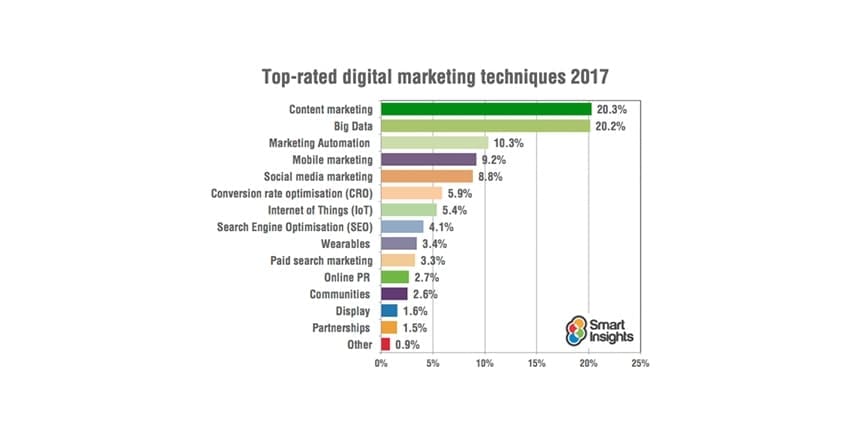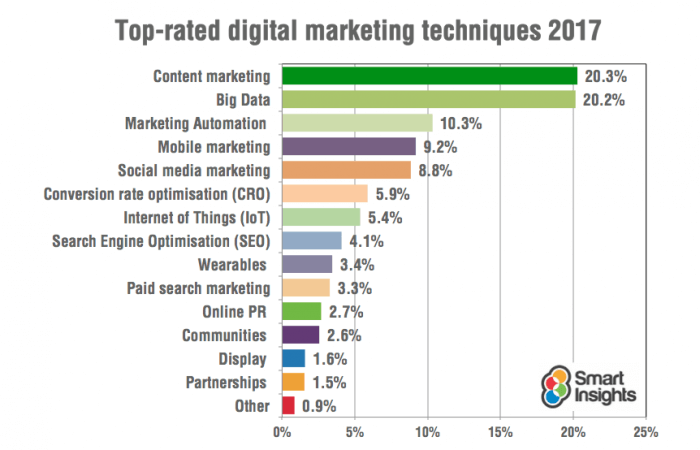
Navigate an unpredictable landscape with actionable, data-driven strategies tailored for your business from the brand down to the local level.

It’s that time of year when we gaze into our crystal ball and share some of our top industry predictions for 2017. There’s little doubt that 2016 has been an exciting year for innovation, particularly within local and voice search. Artificial intelligence has also come along leaps and bounds welcoming promising new entrants like Viv in the voice-controlled assistance market, which over the next year could easily pose a threat to Google.
But this is an industry that never slows down, and the reality of highly personalised, relevant and targeted content, delivered in real-time through “an intelligent interface for everything”, is easily within sight. Brands and businesses are interacting more directly with customers than ever before, and video is making this experience even more compelling.
According to Google, mobile has forever changed how consumers engage with brands. It argues mobile has “fractured the consumer journey into hundreds of real-time, intent-driven micro-moments”. As part of this, Google claims 82% of smartphone users will turn to their phone to influence a purchase decision in-the-moment. Consequently, in 2017, instead of thinking in campaign bursts, brands and businesses will increasingly be shifting their attention towards building an always-on presence.
Smart Insights asked readers to give their opinion on the most important trends for 2017. It had 2,352 responses from marketers around the world, and as the table below illustrates, the resounding majority cited content marketing and big data as the top priorities for the year ahead; themes that have been high priority for quite some time. While some progress has been made in these already, they’ve presented a tall mountain to climb and 2017 could be the year where the digital marketing industry gets closer to the summit.

So without further ado, here are our top four predictions for 2017…
Content
Online marketing has never been so crowded. To stand out, more brands will try unconventional practices and formats, and step further outside their comfort zone. The use of interactive media will continue to rise and we will see more and more publishers moving towards virtual reality and phygital media, using sophisticated technology like the ‘Internet of Things’ and physical sensors to serve up personalised content in real time, while on the move.
Content saturation will also lead to increased specialisation. To see success, publishers will need to get more specific and carve out a defined niche, serving a smaller audience and doing it better than everyone else. Next year we’re bound to see more companies opting for more targeted, almost personal-level content and campaigns.
Also due to a crowded marketplace and algorithmic changes, the organic reach of online content has steadily been declining over the past few years. To counter this, more money has been spent on services such as Outbrain and Taboola, as well as all the social media channels. Moving into next year, paid promotion will continue to grow and new promotion services will arise.
Over the course of the past year, we have also seen search engines becoming better at understanding images and visuals. The prominence of these formats is likely to continue as they become easier to create and consume.
Video
According to the 2016 IAB/PwC Internet Advertising Revenue Report, “across desktop and mobile, digital video generated the greatest gain of any format.” Furthermore video spend is clearly on the rise, increasing by a massive 69% since the first half of 2015. This growth is largely down to innovation in the video space, and also the prevalence of mobile over desktop, giving brands ample opportunities to place impactful video creative in front of their audiences.
Instant video has been a big entrant in the second half of 2016 with Facebook, Instagram and Snapchat nipping at each other’s heals. Facebook launched Instant Video on Messenger, and Instagram rolled out Stories. Facebook said recently that “Instant Video is a reflection of the ubiquity of video” where individuals “simply expect to have that ability in real-time, all the time”.
Subscribe to our monthly newsletter.
The video format, and in particular live streaming, is where industry attention is at right now, and moving into 2017, it seems set to really take off and be utilised by more brands and individuals than ever before.
Natural search
Google is getting smarter, and in 2017 we can expect to see more integration of answer boxes, feature snippets, knowledge graph boxes and carousels in prime areas of the organic listings.
Also, with the rise of importance in site speed, especially for mobile devices, Google now has the potential to improve mobile load time by as much as 15 to 85%.
In 2016, Google has invested much time and effort in local search, with myriad product launches and features being debuted for businesses, and an increasing focus on mobile shopping. It has integrated a “store pickup” link for retailers using local inventory ads (LIA), launched product listing ads within Google image search, making it easier for shoppers to find products and services they would like to buy in SERPs directly. On mobile, these ads feature within a scrollable carousel located above the organic image results. This focus on prioritising local search listings is likely to continue into 2017.
Voice search also made a big impact this year, and moving into 2017, more long-tail keywords are likely to be used in voice searches, through mobile devices particularly, to replace more traditionally short-tail keywords performed on desktops.
Native advertising
It’s nothing new, but native advertising has really made traction in 2016 and seems destined to peak next year. According to research by IPG media lab this year, native ads are viewed for the same amount of time as editorial content and are much more likely to be shared than banner ads (32% versus 19% of respondents said they would do so). Furthermore, according to a recent study by Facebook and IHS, native in-stream ads will drive 63.2% of all mobile display advertising by 2020, amounting to a total value of $53 billion. Facebook also announced earlier in the year that 83% of the ads running on the Audience Network are native, with more than 50% of the apps on the network using native advertising units exclusively. The use of native ad units by apps in the network has increased by a multiple of 10 since Q1 2015.
As consumers continue to lose interest in more traditional forms of advertising, native advertising is really proving its worth, successfully capturing consumers’ attention. Moving forward into 2017 we’re likely to see this trend continue with newer, more improved forms of native advertising offered by major publishers and adopted by brands, ultimately striving towards a cleaner and richer content experience.
Without question, 2017 is set to be an exciting year for digital. With the increased proliferation of varied and versatile apps, as well as the continued growth of mobile and international internet penetration, there will be a further increase in user-generated content and, in response, a surge in creativity from brands trying to keep up. What’s not to love!?
Join us again this time next year (if not before) to look back on the year gone by and assess the accuracy of our crystal ball. Happy New Year!
Navigate an unpredictable landscape with actionable, data-driven strategies tailored for your business from the brand down to the local level.
Navigate an unpredictable landscape with actionable, data-driven strategies tailored for your business from the brand down to the local level.
Navigate an unpredictable landscape with actionable, data-driven strategies tailored for your business from the brand down to the local level.
Subscribe to our monthly newsletter.